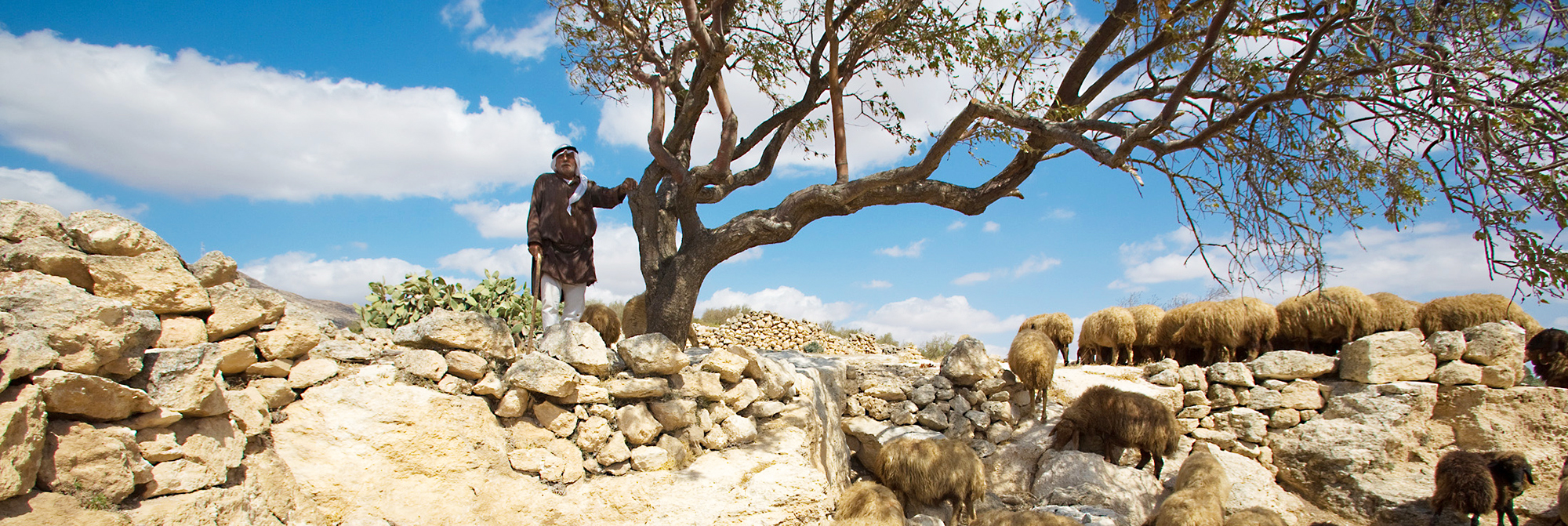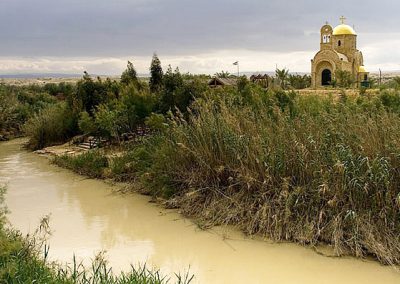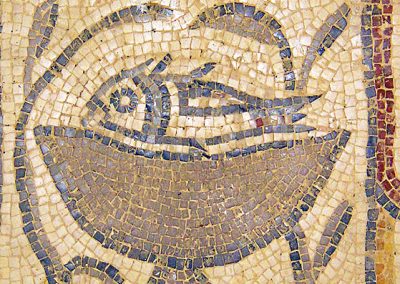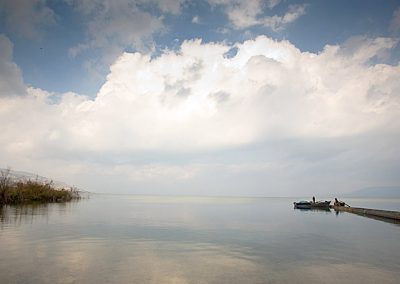
Bible, History, Archaeology
Bible,
History,
Archaeology
Jesus of Nazareth
The sources
The few data on the existence of Jesus come almost exclusively from the four Gospels, written in the second half of the 1st century.
A few more elements can be found in other writings by New Testament, the Acts of the Apostles or the writings of Paul (Acts 20,35 ; 1 Corinthians 11,23, etc.).
Certain other texts, later and dependent on an already well-established tradition on the life of Jesus, are no less important: the Didachè (or doctrine of the twelve apostles, a composite document of Syrian origin, circa 95) and the Letter from Clement of Rome to the Corinthians (circa 95), the Seven Letters of Ignatius of Antioch (verse 115).
Image opposite Presumed location of the birthplace of Jesus of Nazareth in Bethlehem © Damon Lynch.
Flavius Josephus also mentions the resurrection, and the admiration and faith of his disciples, evoking a line of Christians that continues to this day. The authenticity of this passage is the subject of debate, with most commentators today believing it to have been retouched at a later date, although this does not rule out the possibility that Josephus may have written a notice about Jesus.
Allusions from 2nd-century pagan authors
Pliny the Younger, in a letter addressed to Emperor Trajan around 111, reports the results of an investigation he carried out into the Christians of Bithynia following accusations made against them.
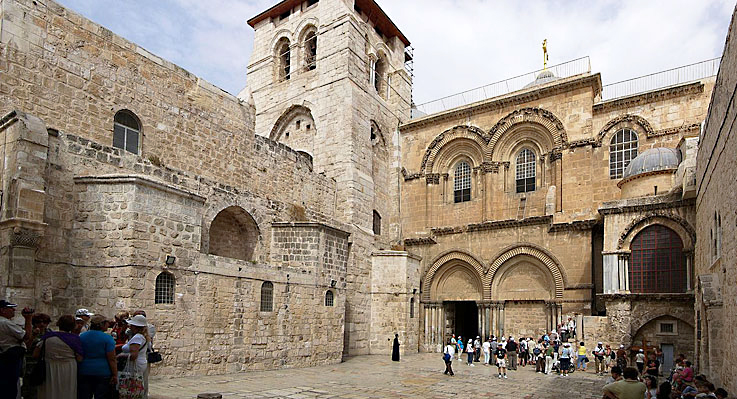
Suetonius, in his The lives of the twelve Caesars (c. 120) explains that the Jews of Rome were expelled under Claudius (49) because they were agitated at the instigation of a certain « Chrestos ».
Image opposite The Basilica of the Nativity in Bethlehem, built according to tradition on the presumed birthplace of Jesus of Nazareth ©. DR.
None of these three authors testifies to the existence of Jesus, but they do attest to the fact that individuals and groups claimed to be his followers, in Rome as early as the 40s.
Its birth
All the events reported here have their main source in the Gospels.
Jesus was born in Bethlehem, the town of King David in Judea, shortly before the death of Herod the Great, around 4 B.C. (Matthew 2:1-13). The exact date, both day and year, is still debated by specialists. Most place it between 7 and 5 BC.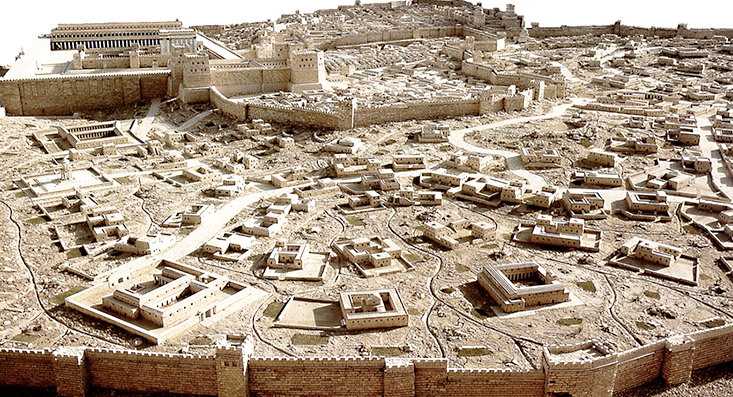
Image opposite A model of Jerusalem in Herod's time. The temple can be seen in the top left-hand corner of the image. Israel Museum, Jerusalem.

The birth of Christ (the Nativity) is traditionally celebrated on December 25, but this date is purely conventional. It was fixed in 354 to coincide with the Roman feast of Sol Invictus. Before this date, the Nativity was celebrated on various dates depending on the province, in spring or often on January 6. Luke's text relates the circumstances of Christ's birth: ... In the same country there were shepherds who lived in the fields and kept watch over their flocks at night... (Luc 2,8).
Image opposite : aureus, obverse, depicting Tiberius, Roman emperor from 42 B.C. to 37 A.D. It was during his reign that Jesus of Nazareth lived © Rome, Museo dell'Ara Pacis.
It seems unlikely that shepherds would graze their flocks in the fields at night during the region's harsh winters.
Eight days after birth, the child is presented to the Temple. As the first-born male, he is consecrated to the Lord and two turtledoves (or two young pigeons) are offered as a sacrifice. He is circumcised like any other Jewish child and, as the angel indicates, is given the name Jesus.
His family, his childhood
In the Gospels, Jesus is presented to us as the carpenter's son and the son of Mary. Matthew and Luke profess a «conception by the virtue of the Holy Spirit».». Jesus was the first-born son of this modest family, where he grew up with his parents. «several brothers and sisters» in Nazareth.
We know virtually nothing about his childhood, except from Luke, who lifts a corner of the veil on an incident that took place at the age of twelve. His parents, who had taken him to Jerusalem and then lost him on the way back, found him after three days in deep conversation in the Temple with the doctors of the Law. They are impressed by the pertinence of his questions and answers.
I am the good shepherd. I know my sheep, and they know me, just as the Father knows me and I know the Father; and I lay down my life for my sheep.... John 10, 14/15. Doron Nissim.
Triumphal entry into Jerusalem
Jesus and his disciples prepare to enter Jerusalem and celebrate his last Passover feast. The apostles think that the recognition of his filiation with King David is finally accepted, but Jesus knows that this triumphal entry and the expulsion of the small traders from the Temple will lead to the final confrontation with the authorities, his arrest and death.
At the last meal Jesus shares with the twelve, he gives his final instructions. He shares bread and wine with them, symbolically demonstrating his imminent death, which will bring redemption to all. This is the beginning of the Last Supper, the sharing of bread and wine, one of the foundations of Christian worship.
Arrest, trial and death sentence
With the complicity of Judas, the Sanhedrin authorities discreetly arrested Jesus at night in the garden of Gethsemane, on the Mount of Olives. False witnesses testify against him. Jesus is finally found guilty of blasphemy, because he accepts the title of Messiah and claims his divine, eternal nature: before Abraham was, I am [...]. Only the Romans can carry out the death sentence linked to this blasphemy, so he is taken before Pontius Pilate, who refuses capital punishment on the grounds put forward by the Sanhedrin. Pilate tried to turn the situation around by sending Jesus to King Herod Antipas, since Galilee came under his jurisdiction and Herod was a childhood friend of Tiberius who had to be spared; in the end, he proposed releasing Jesus on the occasion of the traditional Passover amnesty (Matthieu 25,15), by having him scourged. Nothing could change the minds of the crowd, which was incensed by the priests.
Image opposite A Judean tomb probably belonging to the family of Herod the Great. © Todd Bolen.
Resurrection and ascension
According to the Gospels, Jesus was resurrected on the third day: the texts tell us of eleven separate encounters of the risen Jesus, both with individuals and with large groups.
After the Ascension (Jesus' abduction into heaven), it's up to the disciples and apostles to continue the mission.
The Qasr el Yehud, a Greek Orthodox church near the Jordan where tradition places the place where John the Baptist was baptized. © Doron Nissim.
The Qasr el Yehud, a Greek Orthodox church near the Jordan, where tradition places the place where John the Baptist was baptized.
Mosaic from the Church of St. Stephen at Umm ar-Rasas, Jordan, 8th century © Kareen Truschel.
Mosaic from the Church of Saint Stephen in Umm ar-Rasas, Jordan, 8th century.
General view of Lake Tiberias, the scene of many episodes in the life of Jesus of Nazareth © Doron Nissim.
General view of Lake Tiberias, scene of many episodes in the life of Jesus of Nazareth.


